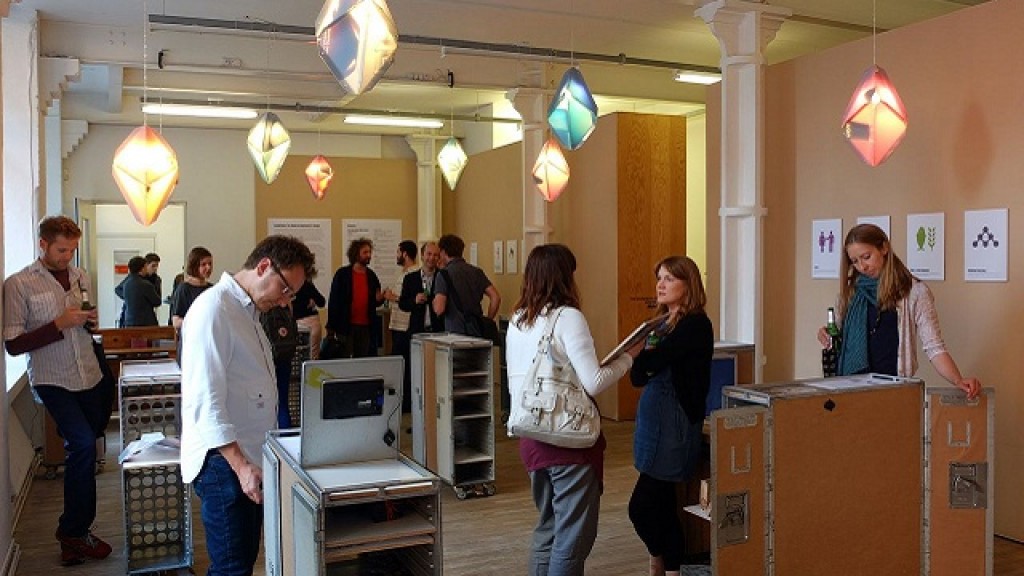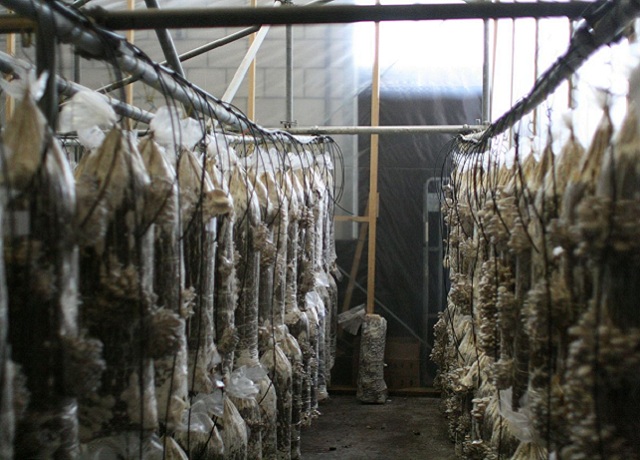Resources - Blog
INSIDEflows: The Superuse Approach to Design

Image: InsideFlows: The Superuse Approach To Design installation view. Courtesy Max Creasy and The Architecture Foundation.
Superuse Studios, established by Jan Jongert and Césare Peeren, have been at the forefront of rethinking our relationships with materials and resources for 15 years. They use reclaimed and waste materials as the starting point for their creative practice, viewing re-use as an integrated design strategy called ‘superuse’. This concept applies to building materials as well as energy supplies, human resources, water, transport, and food cycles. Superuse Studios is divided in four interlinked studios, dealing with research, architecture, design and materials. Here they tell us about their exciting exhibition, which is in London until 31st June.
Superuse Studios and The Architecture Foundation proudly present the exhibition INSIDEflows: The Superuse Approach to Design which will be on show from the 4th of June till 31st of July at the AF Project Space in central London.
INSIDEflows presents Superuse Studios ongoing collaborative research with the INSIDE Masters programme at the Royal Academy of Art in The Hague. The research group INSIDEflows works on developing a systemic understanding of the working of flows in the environment and aims at giving them a positive contribution to design.
In practice it means that the research group analyses existing designs and sites, identifies where there are resource losses in the process or the physical space and subsequently searches for opportunities to design (re)connections that turn waste flows into resources.
Eighteen of these case studies are shown in the exhibition, including both Superuse Studio’s own projects and the work of other selected pioneers. Featured projects demonstrate the superuse approach in practice across a range of disciplines from architecture and product design to food production and distribution.
INSIDEflows forms a mobile, growing encyclopedia that until now only was available online. All content is neatly stored in an installation of reclaimed airline trolleys. Visitors are invited to explore these curiosity cabinets with photographs, videos and material samples. Material flow diagrams and harvest maps accompany the case studies to explain the complexity of closing resource loops on a local level. A special ‘INSIDEflows Glossary’ at the entrance introduces the language and meanings that are frequently used in resource-based practice.
One of the trolleys tells the story of cable reel wood. Wooden cable reels are widely used to distribute electrical cable and wires. Often they are stored outside, leaving parts of the wood to rot. The rotten reels are disposed of at high cost, even though the wood of the inner cillinder is most of the time still in perfect condition. Superuse Studios identified this waste stream as a valuable resource and integrated it into several designs, including the façade of Villa Welpeloo, the interior of restaurant Moes and a threadmill installation for Robodock Festival.
 GRO Holland Mushroom Facility, image courtesy of GRO Holland
GRO Holland Mushroom Facility, image courtesy of GRO Holland
Remarkable is also the case of GRO Holland, who created a closed loop system for the distribution and recycling of food produce. Partnering with the La Place cafe chain, their scheme involves using brewed coffee grounds as a growth substrate for the production of oyster mushrooms, which are then sold back to La Place cafés. Besides the recycling of organics, they inhabit a unique niche in the distribution network. The distribution trucks are full in both directions, picking up coffee grounds – that otherwise would go to waste – and dropping off mushrooms at La Place cafés across The Netherlands.
INSIDEflows: The Superuse Approach to Design will also host the UK launch of the Superuse – Harvest Map website, a new digital platform connecting reclaimable waste materials with makers and clients. Harvestmap allows companies or individuals to offer their supply of materials, components or even buildings to superusers. All available materials, ranging from small quantities to continuous flows of industrial leftovers, are represented. Participation allows users to share their own supplies and designs, provide tips to the community and find available resources in the neighbourhood or the surroundings of a project.
With this exhibition Superuse Studios offers a glimpse of a future economy where resource flows are more attuned and integrated into urban ecosystems. They aim to inspire architects, designers and other entrepreneurs to adapt creative and innovative re-use strategies.





